mitchelllawson
Member
Just thought i'd throw together a Shrimp like Database.
Most of the information will be from other sites and some from my knowledge.
Cross Breeding Charts :



Common Name:
Red Cherry Shrimp/RCS
Scientific Name:
Neocaridina heteropoda
pH range : Ideal pH
6-8 : 7.2
Temperature Range : Ideal Temperature
60 - 85 F : 75 F
Hardness Range : Ideal Hardness
3 - 15 dkh : 8 dKh
Life Span: 1 - 2 years
Size: 0.5" - 1.5"
Little Info :
The Cherry Red Shrimp is an undemanding shrimp in its care requirements. They should be kept in a well established aquarium with no fish or predators that can eat it. The most important factor for water parameter is stability. And as long as none of the water parameters are in the extremes, Red Cherry Shrimp should be happy and healthy.

Common Name:
Crystal Shrimp/CRS
Scientific Name:
Caridina cf. cantonensis
pH Range: Ideal pH
5.8 - 6.8 : 6.2
Temperature Range : Ideal Temperature
62 - 72 F : 68 F
Hardness Range : Ideal Hardness
1 - 5 dkh : 3 dKh
Life Span: 1 - 2 years
Size: 1" - 2"
Little Info :
Crystal Red Shrimp are a little more demanding than many other shrimp. he water is required to be soft and slightly acidic for the Crystal Red Shrimp to be happy. They also prefer a little less than tropical temperatures. The higher grade Crystal Red Shrimp are more sensitive to nitrates than many other shrimp so care must be taken to ensure high quality water.

Common Name:
Tiger Shrimp
Scientific Name:
Caridina sp.
pH Range: Ideal pH
6.0 - 7.25 : 6.5
Temperature Range: Ideal Temperature
68 - 75 F : 72 F
Hardness Range: Ideal Hardness
2 - 10 dkh : 3 dKh
Life Span: 1 - 2 years
Size: 1" - 2"
Little Info:
Tiger shrimp are one of the easiest Caridina species to care for. They do prefer softer and slightly acidic water. Adult shrimp can adapt to harder more alkaline water but their lifespan may be affected and breeding will be greatly reduced and sometimes even prevented. As long as the aquarium water is slightly acidic and soft, the Tiger shrimp requires no special attention. As with all shrimp it is important to keep all water parameters constant.

Common Name:
Blue Pearl Shrimp
Scientific Name:
Neocaridina cf. zhangjiajiensis
pH Range: Ideal pH
6.5 – 7.5 : 7.2
Temperature Range : Ideal Temperature
68 – 80 F : 75 F
Hardness Range : Ideal Hardness
3-10 dkh : 7 dkh
Life Span:
1 – 2 years
Size:
1"-2"
Little Info:
Blue Pearl Shrimp share similar care requirements with most other Neocaridina species, such as the Red Cherry Shrimp. As long as the Blue Pearl Shrimp is kept in a well established aquarium with very stable parameters the Blue Pearl Shrimp is a rather undemanding Dwarf Shrimp. While the Blue Pearl Shrimp can adapt to a wide verity of water parameters, as with most Dwarf Shrimp, stability is key!

Common Name:
Bee Shrimp
Scientific Name:
Caridina cf. cantonenis
pH Range : Ideal pH
5.8-6.8 : 6.4
Temperature Range : Ideal Temperature
65-72 F : 65 F
Hardness Range : Ideal Hardness
1-5 dkh : 4 dkh
Life Span:
1 – 2 years
Size:
1-2 inches
Little Info:
Bee Shrimp are omnivores and share the same diet that most shrimp enjoy. Algae eaters by nature, the Bee Shrimp will eat naturally occurring algae in the home aquarium. While they are algae eaters it is often necessary to supplement the Bee Shrimps diet. Sinking food intended for bottom feeding fish or any food intended for aquatic invertebrates will do just fine. There are foods made in Japan specifically for Bee Shrimp and Crystal Red Shrimp that are high quality foods, but are not necessary

Common Name:
King Kong Shrimp, Black King Kong, BKK
Scientific Name:
Caridina cf. cantonensis
pH Range: Ideal pH
5.8 - 6.8 : 6.2
Temperature Range: Ideal Temperature
62 - 72 F : 68 F
Hardness Range: Ideal Hardness
1 - 2 dkh : 2 dKh
Life Span:
1 - 2 years
Size:
1" - 2"
Little Info:
Never kept them and there is literally NO information on the internet.

Common Name:
Green Shrimp
Scientific Name:
Caridina Babauti
pH Range: Ideal pH
6.5 - 7.5 : 7
Temperature Range: Ideal Temperature
22 - 27 C F : 24 C
Hardness Range: Ideal Hardness
(Not too sure, if someone could advise on this)
Life Span:
1 - 2 years
Size:
1" - 1.75"
Little Info:
The Dark Green Shrimp originates in Asia, however the exact location is unknown. Its first introduction to the hobby was mid 2007 and is popular due to its dark green coloration and rapid growth of offspring. Due to the fact that there is another species, Caridina Babaulti sp "green", which is also a green coloration. The Babaulti species is not as dark green as the Dark Green Shrimp and the offspring do not grow as fast either.

Common Name:
Yellow rhino shrimp
Scientific Name:
Xiphocaris elongata
pH Range: Ideal pH
7 - 8 : 7.5
Temperature Range: Ideal Temperature
71.6 F - 82.4 F : 75 F
Hardness Range: Ideal Hardness
1-6 dKh : 4dKh
Life Span:
1 - 2 years
Size:
1" - 1.75"
Little Info:
The Yellow Nose shrimp is another shrimp that cannot be found anywhere in stores, on or offline. It looks very similar to some of the Asian shrimp species with long rostra ("noses") such as the Rednose Shrimp (Caridina gracilirostris). However, this one is a new world native hailing from the Caribbean, where it can be found in almost every stream or creek. This very attractive shrimp has the same requirements as the Asian Caridina species, i.e. it needs clean water and eats algae and micro-aufwuchs in its natural habitat. In captivity it is very hardy and happily eats algae and fish food.

Common Name:
Amano Shrimp
Scientific Name:
Caridina Japonica
pH Range: Ideal pH
7 - 7.5 : 7.2
Temperature Range: Ideal Temperature
23 - 27 C : 25 C
Hardness Range: Ideal Hardness
wide range, not sure specifics.
Life Span:
2 - 3 years
Size:
1" - 2.25"
Little Info:
In their natural habitat, Caridina Japonica are gregarious animals that live in shoals of several hundreds. But this gregarious instinct is barely obvious in our tanks, since we often keep them in scarce numbers, and also due to the lack of space in most freshwater tanks.
These shrimps have no problem living with other fishes or shrimps (beware of aggresive shrimps such as macrobrachia, though), insofar as the fishes do not get too interested in them. If so, the shrimps will readily swim around in your tank and you will often see them. But if the fishes do get interested in them, in a "gastronomic" sort of way (if you see what I mean , you will barely be able to see them; at best because they're hiding all the time, at worst because they've been eaten.
, you will barely be able to see them; at best because they're hiding all the time, at worst because they've been eaten.
Most of the time they are peaceful creatures, all-day-long scouring the bottom of the tank in their never-ending search for food. But once in a while you will find them racing around like crazy. There can be a few reasons to that frantic beahaviour:
- If only the males are racing around trying to copulate with everything in sight, you can be sure a female is ready to mate and has released her pheromones in the water.
- If both males and females are running Indycar-like, they are either welcoming a recent fresh-water change, or else sadder news: somewhere in your tank a dead fish is arousing their appetite for carrion flesh... Besides it is not unusual to see them attack some fish dying at the bottom even though it is still alive.

Common Name:
Snowball Shrimp
Scientific Name:
Neocaridina cf. zhangjiajiensis var. white
pH Range: Ideal pH
6 - 8 : 7
Temperature Range: Ideal Temperature
69 - 82 F : 76 F
Hardness Range: Ideal Hardness
1 - 5 dkH : 3 dKh
Life Span:
1 - 2 years
Size:
0.75" - 1.2"
Little Info:The Snowball Shrimp is the selectively bred white variant of the Neocaridina cf. zhangjiajiensis. Originally selectively bred in Germany for its white coloration, the Snowball Shrimp is just as hardy, and breeds almost as quickly as the Cherry Shrimp. The name "Snowball" came specifically from its pure white eggs, which look like snowballs!

Hope this helped.
If there are any other shrimp you would like me too add, if i can shoot me a pm/comment below.
http://www.theshrimpfarm.com/ - was used a lot during the making of this master piece.
Mitchell.
Most of the information will be from other sites and some from my knowledge.
Cross Breeding Charts :

Common Name:
Red Cherry Shrimp/RCS
Scientific Name:
Neocaridina heteropoda
pH range : Ideal pH
6-8 : 7.2
Temperature Range : Ideal Temperature
60 - 85 F : 75 F
Hardness Range : Ideal Hardness
3 - 15 dkh : 8 dKh
Life Span: 1 - 2 years
Size: 0.5" - 1.5"
Little Info :
The Cherry Red Shrimp is an undemanding shrimp in its care requirements. They should be kept in a well established aquarium with no fish or predators that can eat it. The most important factor for water parameter is stability. And as long as none of the water parameters are in the extremes, Red Cherry Shrimp should be happy and healthy.

Common Name:
Crystal Shrimp/CRS
Scientific Name:
Caridina cf. cantonensis
pH Range: Ideal pH
5.8 - 6.8 : 6.2
Temperature Range : Ideal Temperature
62 - 72 F : 68 F
Hardness Range : Ideal Hardness
1 - 5 dkh : 3 dKh
Life Span: 1 - 2 years
Size: 1" - 2"
Little Info :
Crystal Red Shrimp are a little more demanding than many other shrimp. he water is required to be soft and slightly acidic for the Crystal Red Shrimp to be happy. They also prefer a little less than tropical temperatures. The higher grade Crystal Red Shrimp are more sensitive to nitrates than many other shrimp so care must be taken to ensure high quality water.
Common Name:
Tiger Shrimp
Scientific Name:
Caridina sp.
pH Range: Ideal pH
6.0 - 7.25 : 6.5
Temperature Range: Ideal Temperature
68 - 75 F : 72 F
Hardness Range: Ideal Hardness
2 - 10 dkh : 3 dKh
Life Span: 1 - 2 years
Size: 1" - 2"
Little Info:
Tiger shrimp are one of the easiest Caridina species to care for. They do prefer softer and slightly acidic water. Adult shrimp can adapt to harder more alkaline water but their lifespan may be affected and breeding will be greatly reduced and sometimes even prevented. As long as the aquarium water is slightly acidic and soft, the Tiger shrimp requires no special attention. As with all shrimp it is important to keep all water parameters constant.
Common Name:
Blue Pearl Shrimp
Scientific Name:
Neocaridina cf. zhangjiajiensis
pH Range: Ideal pH
6.5 – 7.5 : 7.2
Temperature Range : Ideal Temperature
68 – 80 F : 75 F
Hardness Range : Ideal Hardness
3-10 dkh : 7 dkh
Life Span:
1 – 2 years
Size:
1"-2"
Little Info:
Blue Pearl Shrimp share similar care requirements with most other Neocaridina species, such as the Red Cherry Shrimp. As long as the Blue Pearl Shrimp is kept in a well established aquarium with very stable parameters the Blue Pearl Shrimp is a rather undemanding Dwarf Shrimp. While the Blue Pearl Shrimp can adapt to a wide verity of water parameters, as with most Dwarf Shrimp, stability is key!

Common Name:
Bee Shrimp
Scientific Name:
Caridina cf. cantonenis
pH Range : Ideal pH
5.8-6.8 : 6.4
Temperature Range : Ideal Temperature
65-72 F : 65 F
Hardness Range : Ideal Hardness
1-5 dkh : 4 dkh
Life Span:
1 – 2 years
Size:
1-2 inches
Little Info:
Bee Shrimp are omnivores and share the same diet that most shrimp enjoy. Algae eaters by nature, the Bee Shrimp will eat naturally occurring algae in the home aquarium. While they are algae eaters it is often necessary to supplement the Bee Shrimps diet. Sinking food intended for bottom feeding fish or any food intended for aquatic invertebrates will do just fine. There are foods made in Japan specifically for Bee Shrimp and Crystal Red Shrimp that are high quality foods, but are not necessary
Common Name:
King Kong Shrimp, Black King Kong, BKK
Scientific Name:
Caridina cf. cantonensis
pH Range: Ideal pH
5.8 - 6.8 : 6.2
Temperature Range: Ideal Temperature
62 - 72 F : 68 F
Hardness Range: Ideal Hardness
1 - 2 dkh : 2 dKh
Life Span:
1 - 2 years
Size:
1" - 2"
Little Info:
Never kept them and there is literally NO information on the internet.

Common Name:
Green Shrimp
Scientific Name:
Caridina Babauti
pH Range: Ideal pH
6.5 - 7.5 : 7
Temperature Range: Ideal Temperature
22 - 27 C F : 24 C
Hardness Range: Ideal Hardness
(Not too sure, if someone could advise on this)
Life Span:
1 - 2 years
Size:
1" - 1.75"
Little Info:
The Dark Green Shrimp originates in Asia, however the exact location is unknown. Its first introduction to the hobby was mid 2007 and is popular due to its dark green coloration and rapid growth of offspring. Due to the fact that there is another species, Caridina Babaulti sp "green", which is also a green coloration. The Babaulti species is not as dark green as the Dark Green Shrimp and the offspring do not grow as fast either.
Common Name:
Yellow rhino shrimp
Scientific Name:
Xiphocaris elongata
pH Range: Ideal pH
7 - 8 : 7.5
Temperature Range: Ideal Temperature
71.6 F - 82.4 F : 75 F
Hardness Range: Ideal Hardness
1-6 dKh : 4dKh
Life Span:
1 - 2 years
Size:
1" - 1.75"
Little Info:
The Yellow Nose shrimp is another shrimp that cannot be found anywhere in stores, on or offline. It looks very similar to some of the Asian shrimp species with long rostra ("noses") such as the Rednose Shrimp (Caridina gracilirostris). However, this one is a new world native hailing from the Caribbean, where it can be found in almost every stream or creek. This very attractive shrimp has the same requirements as the Asian Caridina species, i.e. it needs clean water and eats algae and micro-aufwuchs in its natural habitat. In captivity it is very hardy and happily eats algae and fish food.
Common Name:
Amano Shrimp
Scientific Name:
Caridina Japonica
pH Range: Ideal pH
7 - 7.5 : 7.2
Temperature Range: Ideal Temperature
23 - 27 C : 25 C
Hardness Range: Ideal Hardness
wide range, not sure specifics.
Life Span:
2 - 3 years
Size:
1" - 2.25"
Little Info:
In their natural habitat, Caridina Japonica are gregarious animals that live in shoals of several hundreds. But this gregarious instinct is barely obvious in our tanks, since we often keep them in scarce numbers, and also due to the lack of space in most freshwater tanks.
These shrimps have no problem living with other fishes or shrimps (beware of aggresive shrimps such as macrobrachia, though), insofar as the fishes do not get too interested in them. If so, the shrimps will readily swim around in your tank and you will often see them. But if the fishes do get interested in them, in a "gastronomic" sort of way (if you see what I mean
Most of the time they are peaceful creatures, all-day-long scouring the bottom of the tank in their never-ending search for food. But once in a while you will find them racing around like crazy. There can be a few reasons to that frantic beahaviour:
- If only the males are racing around trying to copulate with everything in sight, you can be sure a female is ready to mate and has released her pheromones in the water.
- If both males and females are running Indycar-like, they are either welcoming a recent fresh-water change, or else sadder news: somewhere in your tank a dead fish is arousing their appetite for carrion flesh... Besides it is not unusual to see them attack some fish dying at the bottom even though it is still alive.
Common Name:
Snowball Shrimp
Scientific Name:
Neocaridina cf. zhangjiajiensis var. white
pH Range: Ideal pH
6 - 8 : 7
Temperature Range: Ideal Temperature
69 - 82 F : 76 F
Hardness Range: Ideal Hardness
1 - 5 dkH : 3 dKh
Life Span:
1 - 2 years
Size:
0.75" - 1.2"
Little Info:The Snowball Shrimp is the selectively bred white variant of the Neocaridina cf. zhangjiajiensis. Originally selectively bred in Germany for its white coloration, the Snowball Shrimp is just as hardy, and breeds almost as quickly as the Cherry Shrimp. The name "Snowball" came specifically from its pure white eggs, which look like snowballs!
Hope this helped.
If there are any other shrimp you would like me too add, if i can shoot me a pm/comment below.
http://www.theshrimpfarm.com/ - was used a lot during the making of this master piece.
Mitchell.
Attachments
-
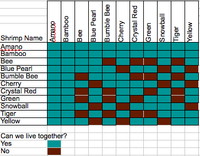 Screen+shot+2010-04-14+at+10.51.56+PM.png26.8 KB · Views: 602
Screen+shot+2010-04-14+at+10.51.56+PM.png26.8 KB · Views: 602 -
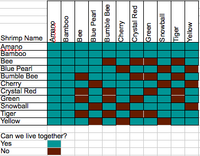 Screen+shot+2010-04-14+at+10.51.56+PM.png26.8 KB · Views: 760
Screen+shot+2010-04-14+at+10.51.56+PM.png26.8 KB · Views: 760 -
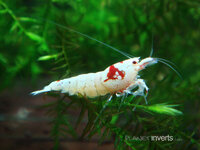 crystal_red_shrimp_SSS_grade.jpg75.8 KB · Views: 141
crystal_red_shrimp_SSS_grade.jpg75.8 KB · Views: 141 -
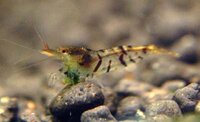 tiger_shrimp_1.jpg25.7 KB · Views: 164
tiger_shrimp_1.jpg25.7 KB · Views: 164 -
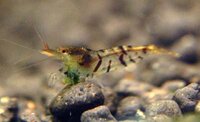 tiger_shrimp_1.jpg25.7 KB · Views: 109
tiger_shrimp_1.jpg25.7 KB · Views: 109 -
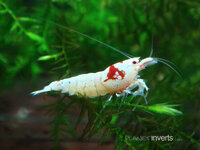 crystal_red_shrimp_SSS_grade.jpg75.8 KB · Views: 254
crystal_red_shrimp_SSS_grade.jpg75.8 KB · Views: 254 -
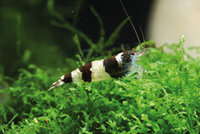 hummel%20einzel%20auf%20riccardia.jpg131 KB · Views: 222
hummel%20einzel%20auf%20riccardia.jpg131 KB · Views: 222 -
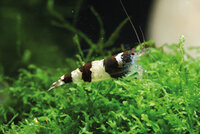 hummel%20einzel%20auf%20riccardia.jpg131 KB · Views: 106
hummel%20einzel%20auf%20riccardia.jpg131 KB · Views: 106 -
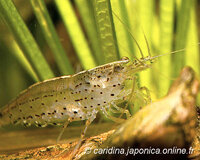 Im20005.jpg59.1 KB · Views: 173
Im20005.jpg59.1 KB · Views: 173 -
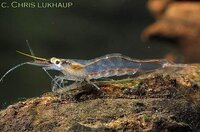 caridina_sp_gelbhorn1.jpg34.8 KB · Views: 115
caridina_sp_gelbhorn1.jpg34.8 KB · Views: 115 -
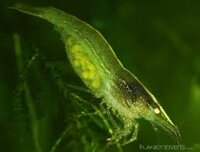 images?q=tbn:ANd9GcSAf4yOBYxauNOfE-PzfXZQi5woGDslFxuehPB70onUIwSZJI0B_xXZgDOF.jpg5.7 KB · Views: 104
images?q=tbn:ANd9GcSAf4yOBYxauNOfE-PzfXZQi5woGDslFxuehPB70onUIwSZJI0B_xXZgDOF.jpg5.7 KB · Views: 104 -
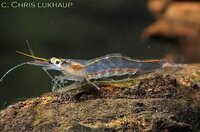 caridina_sp_gelbhorn1.jpg34.8 KB · Views: 313
caridina_sp_gelbhorn1.jpg34.8 KB · Views: 313 -
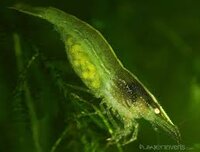 images?q=tbn:ANd9GcSAf4yOBYxauNOfE-PzfXZQi5woGDslFxuehPB70onUIwSZJI0B_xXZgDOF.jpg5.7 KB · Views: 115
images?q=tbn:ANd9GcSAf4yOBYxauNOfE-PzfXZQi5woGDslFxuehPB70onUIwSZJI0B_xXZgDOF.jpg5.7 KB · Views: 115 -
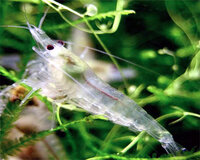 snowBallShrimp3.jpg33.5 KB · Views: 128
snowBallShrimp3.jpg33.5 KB · Views: 128 -
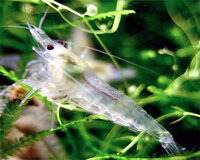 snowBallShrimp3.jpg33.5 KB · Views: 153
snowBallShrimp3.jpg33.5 KB · Views: 153 -
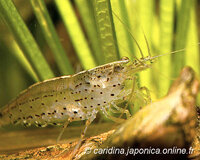 Im20005.jpg59.1 KB · Views: 113
Im20005.jpg59.1 KB · Views: 113


